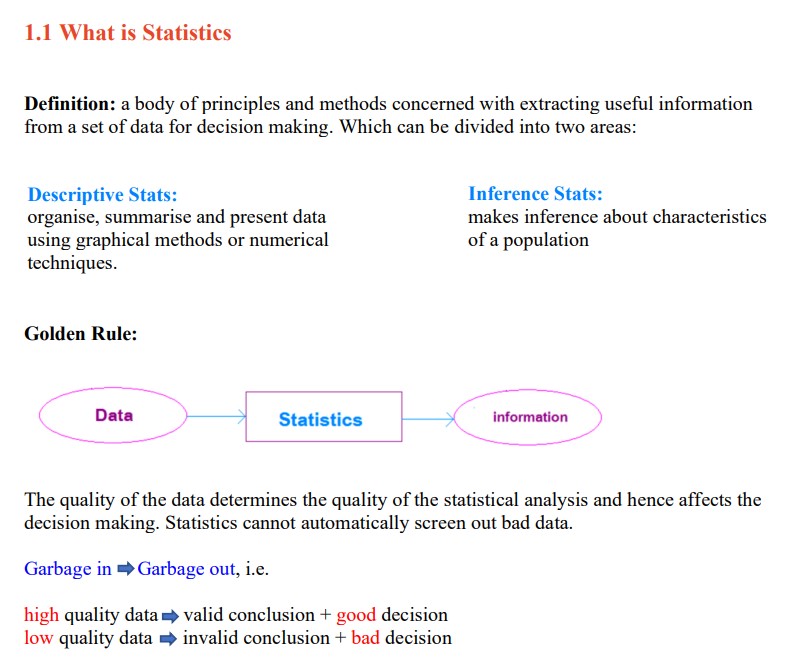QBUS5002 Quantitative Methods for Accounting
Summary:
These QBUS5002 Quantitative Methods for Accounting study notes provide a comprehensive overview of QBUS5002 Quantitative Methods for Accounting. They cover various topics, including Introduction to Statistics, Probability, Random Variables, Discrete and Continuous Probability, Sampling Distribution, Statistical Inference, and Regression Analysis. The notes offer clear explanations, step-by-step examples, and a concise formula sheet for quick reference. They are designed to help students understand key concepts and serve as a reliable guide for exam preparation and as a handy reference throughout the course. The specific topics covered include Intro to Statistics, Probability, Random Variables, Discrete & Continuous Probability, Sampling Distribution, Statistical Inference (1, 2, 3, 4, & 5), Regression Analysis (1, 2, & 3), Notation, and Formula Sheet & Excel Function. The Intro to Statistics section covers concepts such as statistics, sampling and sampling plans, population and sample, measures of central tendency and other locations, measures of variation, and measures of association.
Excerpt:
QBUS5002 Quantitative Methods for Accounting
Topic:
1. Intro to Statistics
2. Probability
3. Random Variables
4. Discrete & Continuous Probability
5. Sampling Distribution
6. Statistical Inference 1
7. Statistical Inference 2
8. Statistical Inference 3
9. Statistical Inference 4 & 5
10. Regression Analysis 1
11. Regression Analysis 2
12. Regression Analysis 3
13. Notation
14. Formula Sheet & Excel Function
Intro to Statistics
1.1 What are Statistics
1.2 Sampling & Sampling Plans
1.3 Population & Sample
1.4 Measures of Central Tendency & Other Locations
1.5 Measures of Variation
1.6 Measures of Association
1.1 What are Statistics
Definition: a body of principles and methods concerned with extracting useful information from a data set for decision-making. Which can be divided into two areas:
- Descriptive Stats:
organise, summarise and present data
using graphical methods or numerical
techniques - Inference Stats:
makes an inference about characteristics
of a population
Golden Rule:

ATTACHMENT DETAILS
QBUS5002 Quantitative Methods for Accounting
The data quality determines the quality of the statistical analysis and hence affects the decision-making. Statistics cannot automatically screen out bad data.
Garbage in –> Garbage out, i.e.
high quality data –> valid conclusion + good decision
low quality data –> invalid conclusion + bad decision
1.2 Sampling & Sampling Plans
Source of Data:
• Data published by organisations in the government and private sectors
• Data obtained from an observational study (without controlling any factor) or an experimental study (with controlling factors).
• Data obtained from a census (expensive & timely)
• Data obtained from a survey (cheaper) – opinion poll, …
• Data obtained from a personal interview or telephone interview
• Data obtained from a questionnaire – questionnaire must be well designed


Reviews